‘The shadow pandemic’: Horror health crisis plaguing our kids
Living with the Covid pandemic over our heads has been tough on us all, but it’s what our kids are going through that has the experts truly worried.
QWeekend
Don't miss out on the headlines from QWeekend. Followed categories will be added to My News.
‘Breathe.” Splayed like starfish, chatterbox children with gap-toothed grins chill out on the carpet of their classroom. Inhaling in unison, they close their eyes and imagine a glowing bubble growing in their bellies, then floating towards their feet.
A 10-minute meditation session breaks up the spelling lesson for Year One students at Scarborough State School, in a laid-back seaside community on the Redcliffe Peninsula north of Brisbane, where the teenage Bee Gees boys busked for pocket money.
“I notice they’re a lot calmer and quieter when their brains have had a rest,” explains teacher Rachel Bradbury, who uses the Smiling Mind program to help her young students switch off from a frenetic world fuelling unprecedented levels of anxiety and depression among Australian children.
“Some of them get a little bit anxious,’’ she says. “You don’t know what’s happening in people’s families, and there’s the bigger picture of what’s going on in the world. It worries me how much negativity there is out there.”
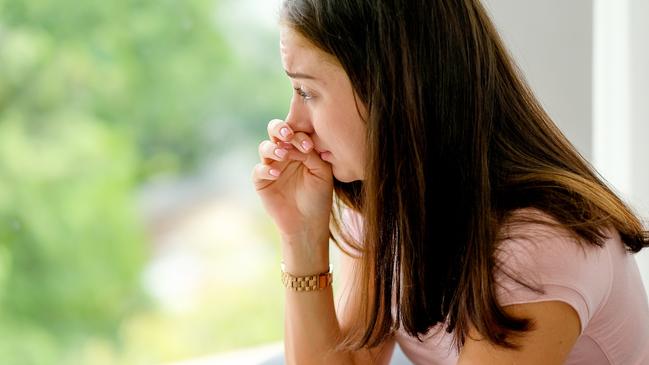
Many adults – who grew up in a time when they could play alone in a park until dark, watch an hour of G-rated TV after school, and make friends face-to-face instead of on Facebook – find it hard to comprehend why so many children and teenagers are struggling with mental health.
But high anxiety is driving rising rates of self-harm and suicide – tragically the leading cause of death for teenagers and young adults aged 15 to 24. More than 220,000 Australian children – one in 20 primary school children and one in eight teenagers – have been prescribed medication for anxiety or depression. Girls are suffering from eating disorders at record rates. Australia’s children are growing up in the Age of Anxiety.
“The Shadow Pandemic” is how psychiatrist Patrick McGorry describes the impact of Covid-19, as uncertainty and panic over the pandemic, paired with the sorrow and loneliness of lockdowns, sends young Australians into a mental health meltdown.
The founder of two youth mental health services, Headspace and Orygen, Professor McGorry has watched with alarm as the growing number of distraught children overwhelms mental health services, forcing some kids to wait three years to see a psychiatrist.
“(Covid-19) already was a mild illness in children and young people, and Omicron is even milder, so that’s not the main risk. The biggest threats to young people’s mental health are too much fear mongering and too much disruption of their lives,’’ says McGorrie, president of the International Association for Youth Mental Health.
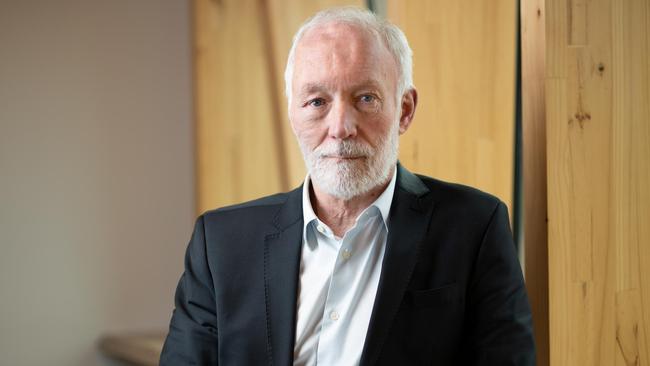
“All around the world, it’s been young people that have been worst affected from a mental health point of view, even though they’ve been least affected from a Covid point of view,’’ he says. “There are much higher levels of anxiety and depression now. There’s been a 50 per cent increase in ER (emergency room) presentations among teenagers, especially young women. Parents are struggling to help their children recover. More stability and security is what they need in their lives.”
The confronting sight of park playgrounds wrapped in bright yellow council tape, emblazoned with the word CAUTION to warn children away, was the final straw for Melbourne mum Jess Barcenas.
For her three young children, Mia, 9, Alannah, 6, and Declan, 4, a stroll to the park to play was the highlight of each dreary day during the world’s longest lockdown. Melbourne residents endured 262 days of home confinement – with schools shut and visitors banned – during six separate lockdowns between March 2020 and November 2021.
Classrooms closed. Sport was cancelled. Swimming and dance and music lessons were put on hold. Playdates were banned. Then the Andrews government, alarmed over fast-rising rates of Covid-19 infections, ordered the closure of all playgrounds in August.
“All of our ‘normal’ was taken away,’’ Barcenas recalls.
“The children were always asking, ‘When is lockdown going to be over? Will I get sick? Mummy, why have they closed the playgrounds?’ We would go to the playground daily as a bit of a reprieve, and motivation to do school work. I would get emotional when walking or driving past playgrounds taped up – I felt sad and angry and frustrated.’’
While the older girls focused on school work, little brother Declan – who has spent half his young life in lockdown – did not cope well with being kept home from kindy. “He was having the type of tantrums he would have had at two years old,” Barcenas says.
“I put it down to struggling to cope – he’s got to let it out somehow. To be living through a pandemic from two to four years old, it’s a big part of his childhood.”
Teenagers, too, were thrown a curve ball by Covid-19 lockdowns, missing the rites of passage in their transition from adolescent to adult. Cooped up with stressed parents, senior students drowning in difficult assignments and tough exams had to navigate their hardest years of schooling in their bedrooms.
Part-time jobs were lost as retail and hospitality businesses – the biggest employers of teenagers – shut down. Sport, school camps, school formals, muck-up days and 18th birthday parties and schoolies celebrations were canned across much of the country. “Everything we look forward to has been cancelled,” one depressed teenager lamented during a crisis call to Kids Helpline.

Among the graduates of the Covid Class of 2021 was Jess Irons, who was thrilled to finally fly the coop of lockdowns to experience her postponed school formal, muck-up day and valedictory ceremony – all within 24 hours.
“We had our formal postponed three times, and muck-up day was cancelled a couple of times,” the 18 year old from Armadale in Melbourne recalls.
“It was very disappointing because it’s a fun event to look forward to, and it marks the end of school. The lockdown impacted me more than I thought it would – school work was difficult and I found it really hard to concentrate and find motivation. The unpredictability of it all made me quite anxious.’’
Friends Lexie McCulloch and Paige McFarlane-Smith both turned 18 during lockdown in Melbourne, unable to celebrate their entry to the adult world with friends. “We missed out on things we’d been looking forward to our whole lives,” Lexie explains.
“All our friends lost motivation at some point. We still felt anxious even when we were at school – everyone was stressed about getting Covid before exams.”
Paige found the home-schooling experience disheartening. “It was a bit overwhelming, suddenly having to sit in your room and do it all yourself,” she says.
“There were up and down waves of disappointment. Every Year 12 student can tell you a story about how they broke down.”
“I hate my life. I hate being in lockdown. I just want to be with my friends. I just want to be at school. Oh my god Mum, what if I get Covid and die?”
The memory of her 11-year-old daughter’s anguished cries during lockdowns still brings Melbourne mother Mary Haines to tears.
“It’s been tough for us,” she sobs. “Just seeing her pain has been really hard to deal with. For her, there’s a lot of anger. She isn’t the kid I knew before lockdowns – that light, happy child isn’t so happy.”
Haines is now paying for a tutor and a counsellor to get both her girls back on track academically and emotionally. “Children have not been supported in the lockdowns,” she says. “I feel they’ve been neglected and I’m really concerned about children’s mental health in coming years.”
Kids Helpline, a hotline and website to help children and teens, has had to double the number of counsellors to cope with a surge in cries for help since the start of the pandemic. As domestic violence and sexual abuse festers under the cover of Covid-19 lockdowns, children as young as 10 have called the hotline so distraught or depressed they want to end their lives.
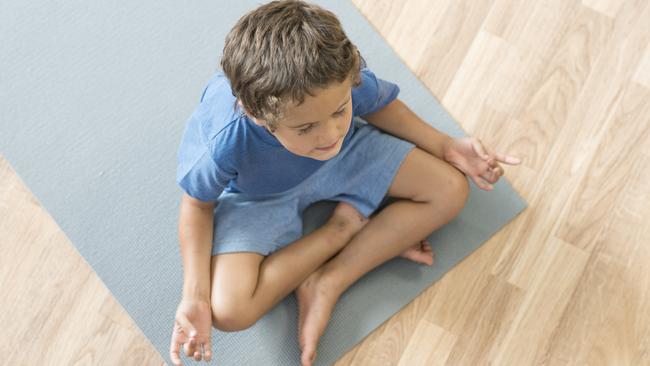
Across Australia, duty-of-care interventions – when counsellors need to call an ambulance or Child Safety to help a child in immediate danger – nearly doubled during 2021.
In Victoria, hardest-hit by lockdowns, emergency actions relating to suicide attempts soared 161 per cent. At Kids Helpline, suicide concerns were raised by 45 children every day, on average, between March and August last year.
“Kids worry about schoolwork and bullying,” says Leo Hede, Kids Helpline specialist programs manager, who has counselled troubled children for the past 15 years.
“They’re absorbing the anxiety of parents. We’ve seen an increase in contacts from younger kids – some as young as 10 or 11 calling us and sharing that they’re having suicidal thoughts, and their parents might not know they’re doing it. Kids of all ages don’t want to burden their parents, because they see their parents are really stressed, so often they’re reluctant to reach out.”
Hede blames the internet for many of the mental health hazards hobbling today’s children.
The ability to access any information at any time – be it deliberately through a Google search, or an accidental view of a YouTube, Snapchat or TikTok video – harms vulnerable children who cannot “unsee” violence or pornography they are too young to comprehend. Apps like Snapchat amplify the FOMO (fear of missing out) effect, as teenagers know what everyone else is doing.
Girls chasing “likes” on Instagram can be lured into “sexting” images that are nigh-impossible to erase from the internet, or have their self-esteem crushed by catty comments online. Boys are peer pressured into watching violent pornography that interferes with a healthy sexual development.
Filtered photos by rake-thin but glamorous “influencers” skew girls’ concept of beauty, fuelling eating disorders such as anorexia nervosa and bulimia. “Doomsday scrolling” of websites and social media feeds is robbing children of their innocence.
Paedophiles lurk online, infiltrating games and social media to prey on children in the 21st century playground of the World Wide Web.
“I’m glad I’m not growing up now, with the pressure and influence of the internet,” Hede confesses.
“In the past, a child might come across a magazine their brother had hidden, but now it’s all happening instantly online – it may be severe adult pornography or even child exploitation material. Algorithms can serve anything up to them. They’re hyper-connected in their social circles. There’s a constant bombardment of media and pressure and choices.”
“Screenagers’’ are spending a third of their waking hours glued to screens, a survey by school-leaver service Year 13 discovered this year, sparking a warning from the Australian Medical Association about rising rates of obesity and mental illness among children who spend more time slouched in front of screens than playing sport.
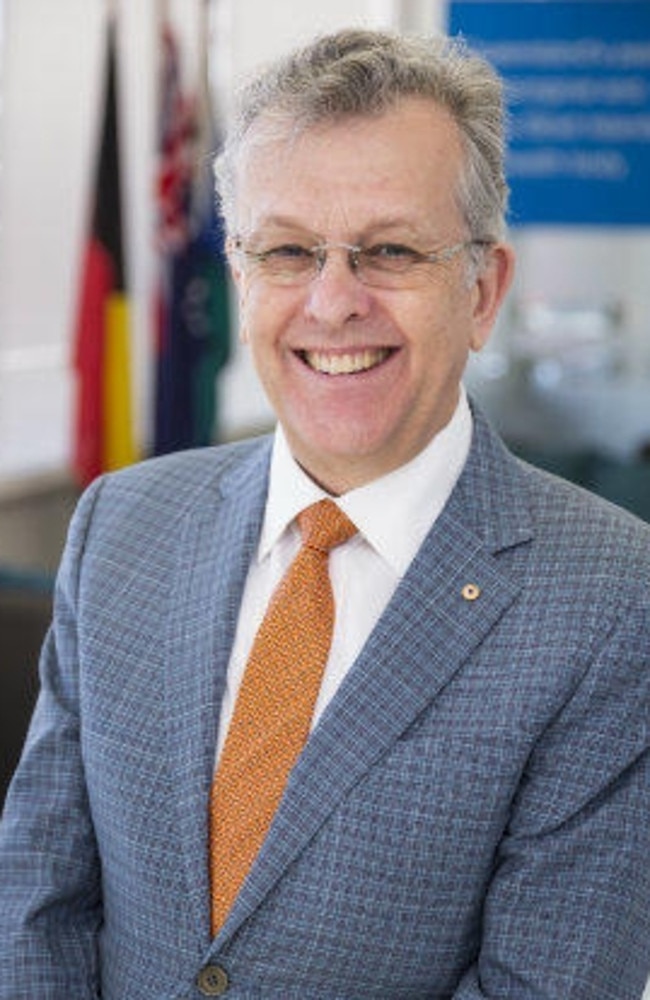
Professor Brett Emmerson, the psychiatrist in charge of mental health units at Queensland Health’s Metro North region – warns the internet is a “major factor in making kids anxious”. “The ability to access violence and pornography is just seconds away,” he says.
“The internet amplifies peer group pressure. It sets expectations that everyone’s supposed to be glamorous and a certain body weight. There is an explosion in eating disorders, and they’re 95 per cent female.”
Australian Primary Principals Association president Malcolm Elliott wants parents to control and curate their children’s access to news and social media.
“There are some things they don’t need to hear about,” he says. “The amount of screen time is a real concern, as it’s not time spent with others.”
Likewise, he urges parents not to air every worry – be it money problems, work dramas or fears of catching Covid-19 – in front of the kids, given how contagious stress can be for children.
“They’re very perceptive – they watch their parents like hawks,” he says. “They’re deeply affected by their parents’ experience – things like mortgage or rental stress, and concern about what’s happening in the world. But they need to know life is a wonderful, joyous thing.”
Elliott has detected a “really concerning” rise in mental health problems among primary school students since the bushfires and floods that ravaged Australia in the summer of 2019, followed by the sucker punch of Covid-19.
“The young children were affected by an awareness that lots of animals had died during the fires,” he says.
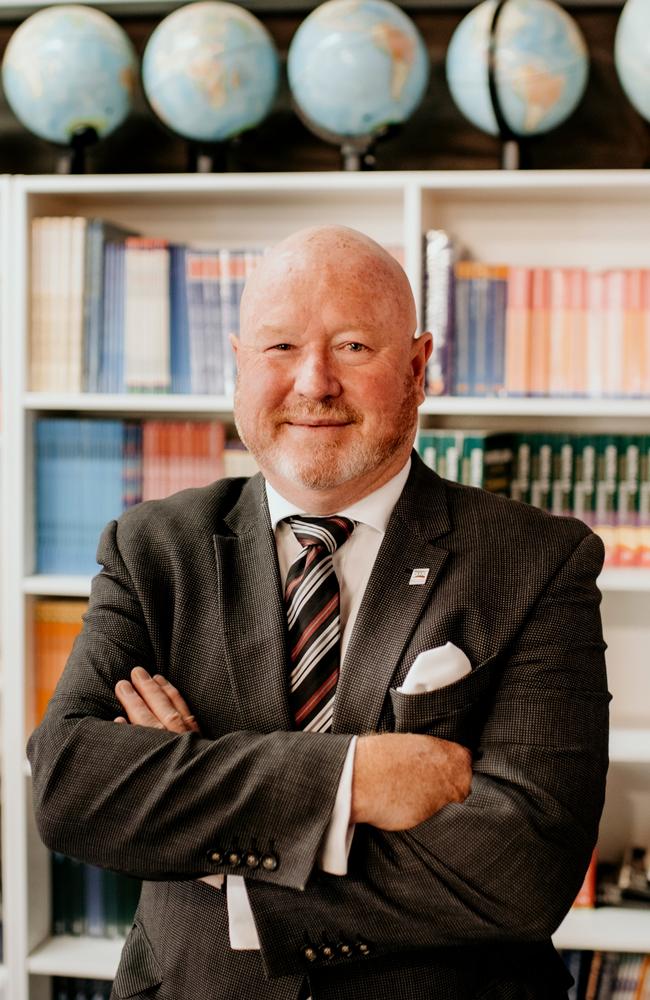
A survey of 3500 young Australians aged 15 to 24 by yourtown, which operates Kids Helpline, discovered widespread anxiety about the impact of Covid-19 and lockdowns, climate change, problems finding a job that would pay enough to live independently, and “how the education system leaves them stressed”.
School principals are reporting a rising rate of truancy and dropouts since the start of the pandemic.
“The most common thing we see is a form of withdrawal,” Elliott says.
“Kids stay away from school, or when they are at school they can be distracted and irritable. They can get really aggressive or defensive about comments they would normally shrug off. After the lockdown in Sydney, a lot of kids left and didn’t come back, even from primary school.”
“My eight-year-old child is starting to bite her nails ’til she bleeds. When I asked why, she says she misses her friends.”
The heartbreaking text message from a worried Sydney mother in lockdown pings on the phone of Dr Michael Carr-Gregg, the prominent child psychologist who was raising the alarm about child anxiety years before the pandemic turned everyone’s lives upside down.
“They ruminate and worry and catastrophise,’’ he says of the generation of children and teenagers who have grown up in the era of the internet.
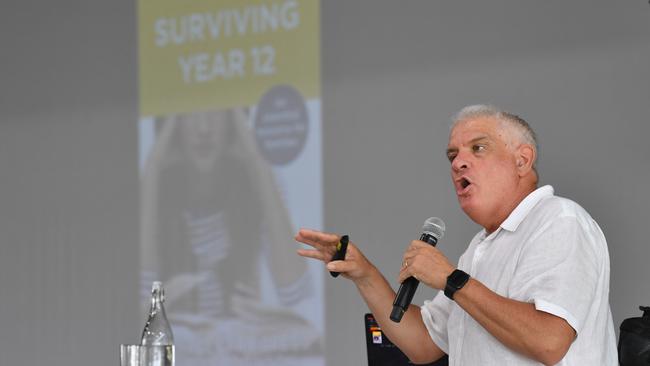
“Anxiety is like a smoke alarm – we need it to go off when there’s a fire. Having an anxiety disorder is like a smoke alarm that goes off all the time when there’s no smoke. Your whole life is a narrative of, ‘What if, what if this happens, what if that happens?”
In his Melbourne psychology practice, Dr Carr-Gregg listens to children and adolescents pour their hearts out, carrying all the worries of the world on their slight shoulders.
“They’re worried about how much work they missed out on at school and how they’ll cope this year,” he says.
“They’re worried about whether friends will still like them. They worry about whether or not they will get a job. We know the divorce rate has gone up significantly, so families have disintegrated. There’s a lot of anxiety about whether there’ll be another virus. Climate change is a big issue – I’ve got little kids coming in and telling me all the polar bears have died.”
As one of Australia’s most experienced child psychologists, Carr-Gregg reckons too many parents try to soothe overly anxious children with cold logic.
“You might as well be trying to teach your dog Shakespeare,” he says.
“You can’t talk logic to someone during an anxiety attack. Parents have got to shut up and stop saying, ‘Stop worrying, it will be OK.’ It’s a logic-free zone, because their prefrontal cortex – the more logical part of the brain – gets put on hold.”
Breathing is the key to calm, Carr-Gregg advises.
“You have to teach your kids that if you calm your breath, you calm your mind,” he explains. “Pretend you’re smelling a rose to a count of three, then imagine you’re blowing out a candle for three.” Apart from relaxation techniques, another tactic is to write a “worry list”. “Get them to write down or draw a picture or paint in order all the things they worry about,” he says. “The moment you draw up a worry list, you can recognise most of the worries in life don’t actually happen.”
Since the start of the pandemic, Carr-Gregg has noticed more children refusing to go to school, or self-harming by cutting themselves.
“One kid told me he was adopting a YOLO philosophy – you only live once. He said there was no point in studying or doing anything other than having a really good time. He was sure he was going to die. It was a genuine belief that we’re all stuffed and there’ll be some sort of apocalyptic ending.”
Concerned about the chronic shortage of mental health professionals to help troubled children, Carr-Gregg is urging the federal government to let 5000 trainee psychologists, who have five years of training under their belts, to be fast-tracked to work immediately and offer Medicare rebates to patients.
McGorrie, who pioneered the multi-disciplinary approach to treating mental health disorders through Headspace, wants more free treatment for children to see a psychiatrist (who diagnoses disorders and prescribes medication), a psychologist (who provides counselling such as cognitive behavioural therapy) and a social worker (who can find solutions to practical problems by liaising with schools and parents) – under the one roof. “You’ve got to have a one-stop shop, with a team,” he insists.
In Queensland, some children are waiting three years to see a psychiatrist. Many private practitioners, who commonly charge $350 a session, are so busy treating existing patients they have closed their books to new ones. The underfunded public system is swamped with the most severe cases of mental illness.
The situation is so dire it has prompted Emmerson – a public servant – to speak out publicly to demand $700m a year more in funding. If governments can afford $5bn to host the Olympic Games, he argues, then surely the happiness of children should be a bigger priority for public spending.

Charities like Smiling Mind are trying to fill the gap, with 1200 schools signed up to provide its mindfulness and meditation programs developed by psychologists and educators. Teachers are trained in positive psychology to help students learn about emotional wellbeing, to regulate their emotions and learn empathy for others.
“We try to help students navigate their way through what life throws at them,’’ says Smiling Mind chief executive Dr Addie Wootten.
“Often children get overwhelmed by emotions. Quite a lot of families have experienced financial hardship during the pandemic and that’s definitely had flow-on effects for kids. They’re constantly engaged, and that can lead to worry and anxiety. We need to teach them to regulate themselves and switch things off – taking breaks from screens is really important. They need to wind down.”
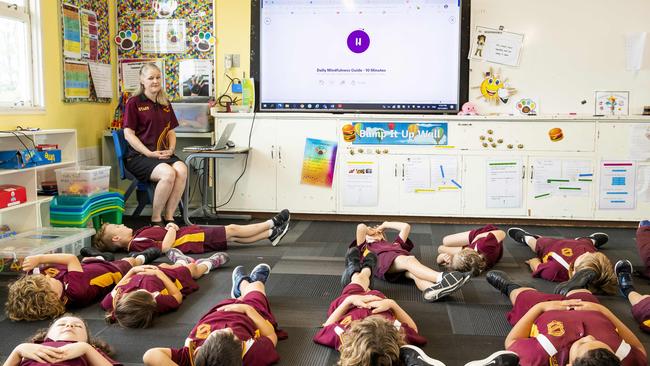
At the Scarborough school, cheerful 12-year-old twins Spencer and Harriett Harrold wrangle paintbrushes and rollers as they help decorate a “serenity space” for the younger students, in a soothing colour scheme of paint donated by Dulux. Bradbury, the Year 1 teacher, hopes she can make a difference to children in distress, and equip young children with skills to self-soothe in times of trouble, throughout their lives.
“We’ve been talking about what we’re grateful for, what makes us happy and how we can be kind to others,” she says. “It’s calming, and they love doing it.”
HOW TO HELP AN ANXIOUS CHILD
● In an emergency call 000
● For free counselling or online advice
Kids Helpline 1800 55 1800kidshelpline.com.au
Lifeline 13 11 44 lifeline.org.au
Headspace 1800 650 890 headspace.org.au
Suicide Callback Service 1300 659 467 suicidecallbackservice.org.au
● Smiling Mind has free “digital care packs” with worksheets and activities to support children’s mental health, as well as tips on mindfulness and an app with meditations for children.
smilingmind.com.au
● Connect to nature - go for walks in a park, bushland or along a beach, or join a Nature Play group in your suburb.
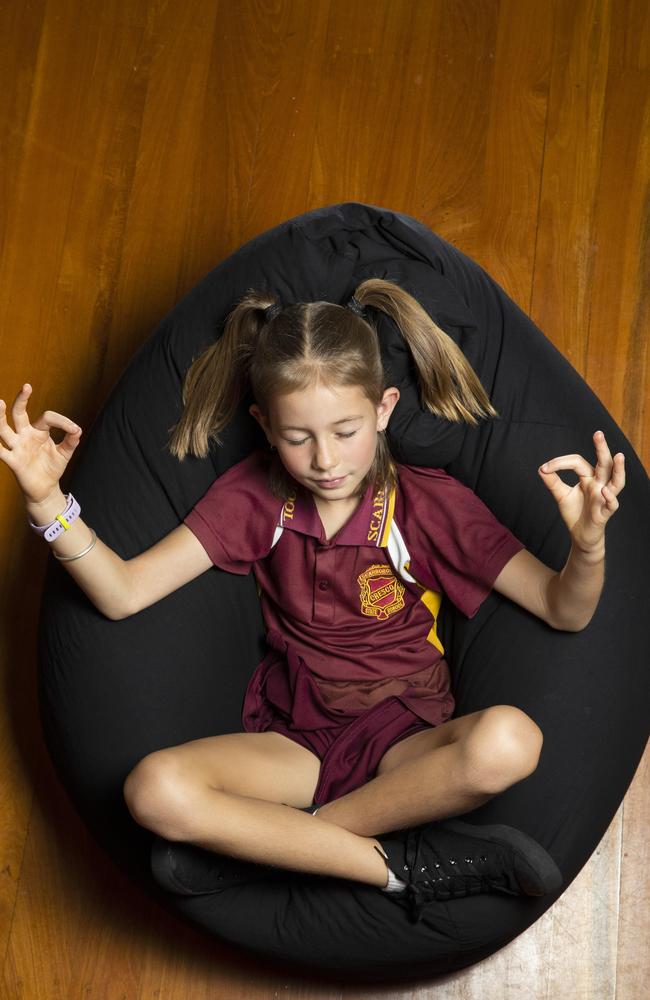
● Get moving – sport and outdoor play are important for children’s physical and mental health. Kids need an hour of “green time” for every hour of screen time.
● Limit and monitor children’s use of internet, social media and online gaming. Keep devices out of kids’ bedrooms. The federal government’s
e-Safety Commissioner has a free guide to safety features for apps, games and social media. Parents can download fact sheets on cyber bullying and online grooming. The e-Safety Commissioner can also intervene to help stop cyber-bullying or online abuse, and remove intimate images posted online, for under-18s.
esafety.gov.au
● The Brave Program, developed by the University of Queensland and backed by Beyond Blue, provides a free, interactive, online program to prevent and treat child and teenage anxiety.
brave4you.psy.uq.edu.au
● Meditate – download a meditation, mindfulness or breathing app designed for children.
● Filter the news – don’t let young children watch news that they will find upsetting.





